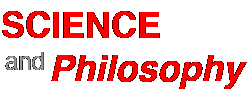Johannes Kepler
Tycho Brahe, the Dane who constructed a great observatory gathered for years data as accurate as the absence of the telescope would permit. His most brilliant assistant, Johannes Kepler, using his [Brahe’s] observations, drew from them epoch-making conclusions. Kepler learned from Brahe to discipline his Neo-Platonic passion for simplicity and harmony by rigorous mathematics and the closest observation of facts. He spent his life searching for the relations obtaining between the various numerical quantities occurring in the solar system —the “Harmony of the World.”
The accurate records of Tycho had revealed the impossibility of calculating the orbits of the planets by Copernicus’ combination of circular movements; so he [Kepler] tried combination after combination of new circles, calculating the results of each and comparing them with the records. One geometrical scheme coincided with an error of but 8', and he was tempted to rest there. But his conviction of the necessity of verification by fact made him take a momentous step. “The divine goodness has given to us in Tycho Brahe a most careful observer, from whose observations the error of 8' is shown in this calculation... These 8' alone have led the way toward the complete reformation of astronomy, and have been made the subject matter of a great part of this work.” It had at last been forced upon men that calculation must be verified by observation!
He tried next, not a circle, but an oval, attempting to fit the data from Mars into an egg-shaped orbit. Then he turned to the simplest known oval curve, the ellipse, and the success of his attempt confirmed his faith in what he called “the simplicity and ordered regularity of Nature.” He had discovered at last the true shape of the planet’s orbit, an ellipse with the sun in one focus. Elated at this discovery, he sought next the law of the variation of the rate of motion of the planet… He was rewarded by his second law, that equal areas of the ellipse are swept out in equal times. Having now solved Mars’ orbit, he was convinced that he had found the laws of all planets, since the harmony of nature demanded that all “have similar habits.” A third law expressed the mathematical relation between the times of revolution of the planets and their distance from the sun.
What was the significance of Kepler’s work? He had shown the success of the method of seeking simple mathematical relations, and the necessity of verifying them by calculation and observation. He had shown that the heavens follow universal and regular laws. And he had shown that they were not different from those of the earth, and that their movements were not perfect — not circular, and not at a uniform speed. The importance of this last discovery can only be realized when we compare it with the Aristotelian doctrine that the heavens were perfect and invariable, admitting of no change, quite unlike the mutable earth…
The old idea of a hierarchy of being, qualitatively different, approaching perfection as it receded from the center of the earth, so well expressed in Dante, had given way to uniform mathematical law. No longer were high, sublime, and ideal forces operating in one realm, and lower and material forces on earth. The democracy of individual facts equal in rank had superseded the Aristotelian feudal system of an ordered gradation of unequal rank. And the significance of this change lies in the fact that all things, including the remote and sublime, are to be described and explained in terms of homely familiar events and forces. In other words, the possibility and the necessity of experiment was established. It remained only for Galileo to drive these momentous notions home by actual observation through the telescope.


